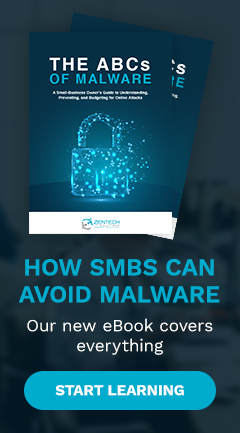We used to see biometrics in sci-fi movies only. Nowadays, multiple industries are utilizing biometrics for all the conveniences and security measures it provides. Understanding biometrics and how it works will help you realize how it can give your company a competitive edge, regardless of your industry.
What is biometrics and how does it work?
Biometrics is the study of biological characteristics and their measurement. In information technology, a biometric system is a method of authentication based on identifiable data that is unique to the person being verified. On the other hand, biometric authentication is an automatic process where a person’s stored data is compared against their physique (morphological) or specific body parts and their unique patterns such as fingers, palm, iris and retina, vein patterns, facial recognition, or gait. A biometric device is used to scan and verify a person’s identity.
Why you should choose biometrics
Biometric authentication has helped multiple industries not only in bolstering data security measures, but also to streamline work processes and cut down on costs. In the government, military, financial, travel, and healthcare sectors, biometrics is being maximized to ensure overall safety and efficient management. Here are common challenges that are addressed by the use of biometric technology.
- Accurate timekeeping and payroll. Biometric timekeeping systems mitigate the risk of having employees punching in for their late officemates. The recorded time can go straight into the payroll database, making it easy to keep tabs on staff’s daily attendance. They get paid for the exact hours they delivered, and this seamless timekeeping system eliminates transferring records from physical timecards or Excel files to a cloud-based database for more efficient workforce management.
- Personal identification in airports. Biometric authentication has changed the landscape of the travel industry, where border control and public safety are the primary concerns. In September 2018, the US Customs and Border Protection (US CBP) reported that a 26-year-old woman traveling from Accra, Ghana arrived at the Washington Dulles International Airport and presented a US passport.
After running a facial recognition test that took less than two seconds, the border patrol officers confirmed an ID mismatch, as the identity check detected a different face from that depicted on her passport photo. With biometric technology, it would be particularly difficult for illegal immigrants with unknown motives to move across borders or countries.
- Consolidating massive health records. In 2015, consolidating health records for millions of Ghanaians was a tremendous challenge for the National Healthcare Insurance Agency (NHIA) as they commenced the National Health Insurance Scheme (NHIS). The year closed with almost one million registrants who had their old magnetic cards replaced with biometric cards. The new cards generate a code to monitor when and where a patient consulted with a doctor.
This helps the government easily identify an upcoming outbreak or track if government-funded medical supplies such as vaccines need to be replenished. It also helps healthcare providers detect fraudulent medical insurance claims since they normally have authorized access to a registrant’s cloud-based information.
- A more robust password management strategy. Bank transactions have become more accessible to customers now more than ever with the surge of cloud services, mobile devices, microchips in bank cards, and others. Unfortunately, these channels enabled the proliferation of cybercriminals. Financial institutions and insurance companies took aggressive measures to ensure they keep up with the times in ensuring data security on all levels.
In using biometric single sign-on (SSO), a user only needs to provide their biologically unique and hard-to-duplicate login credentials to easily access multiple services. This one-time login procedure unifies password and identity management while reinforcing data security. With biomterics, poorly nominated passwords are made stronger when coupled with two-factor authentication.
If you’re ready to raise your security measures while cutting down on costs, contact Zentech IT now for a tailor-fitted biometric solution.
Like This Article?
Sign up below and once a month we'll send you a roundup of our most popular posts


